lf you’re searching for a small ornamental tree that combines striking red foliage, beautiful flowers, and low-maintenance care, the Malus ‘Prairifire’ crabapple is one of the best choices for gardens of all sizes. This red-leaved, small-growing crabapple tree offers a perfect balance of aesthetic appeal, compact size, and year-round interest. In this guide, we’ll explore everything you need to know about Malus ‘Prairifire’, from planting and care to pruning, flowering, and fruiting.
What Is Malus ‘Prairifire’?
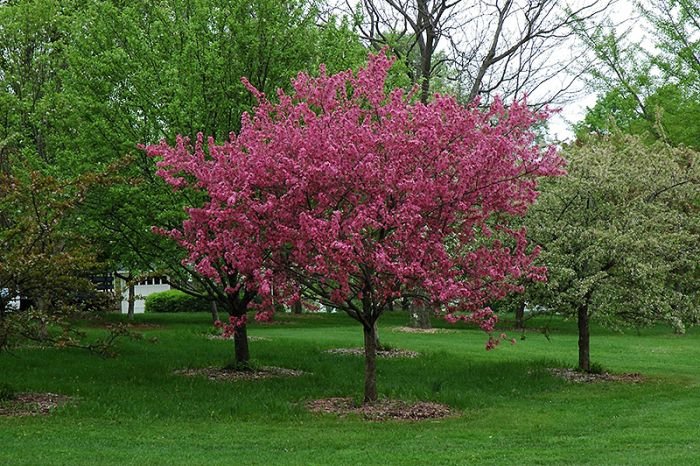
Malus ‘Prairifire’ is a hybrid crabapple tree developed for ornamental use. It is particularly renowned for its vivid red foliage, which emerges bright red in spring, deepens to burgundy in summer, and turns attractive shades of maroon in the fall. Unlike many crabapples that grow large and sprawling, ‘Prairifire’ remains compact and small-growing, making it suitable for urban gardens, patios, and even containers.
This crabapple is not only visually stunning but also offers spring blossoms and small, bright red fruits in the fall, providing multi-season interest. Birds love the fruits, adding a wildlife-friendly aspect to your garden.
Key Features of Malus ‘Prairifire’
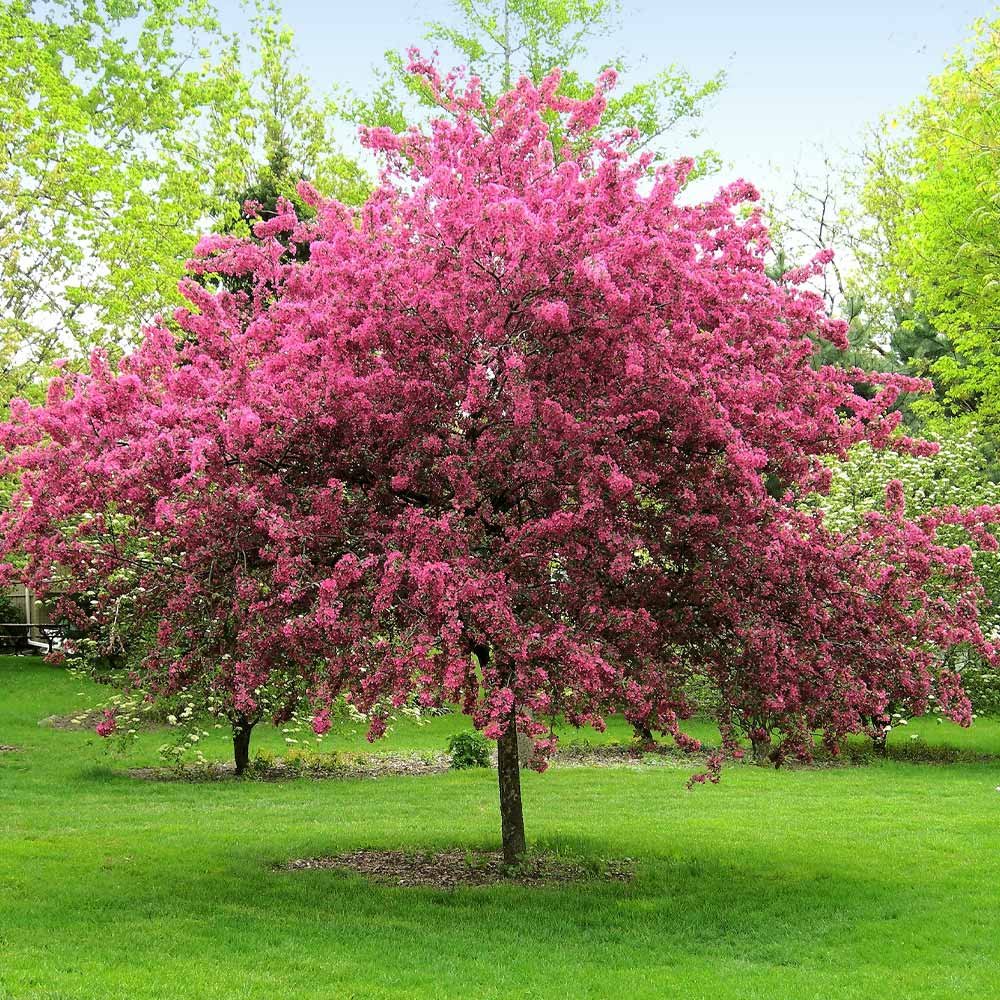
- Size: Small tree, typically 15–20 feet tall and 10–15 feet wide.
- Foliage: Red leaves that deepen in color throughout the season.
- Flowers: Rosy-pink blooms in spring that fade to white.
- Fruit: Small red crabapples in fall that persist into winter.
- Growth Habit: Upright and compact, ideal for small spaces.
- Hardiness: Tolerates USDA zones 4–8 and adapts to a range of soils.
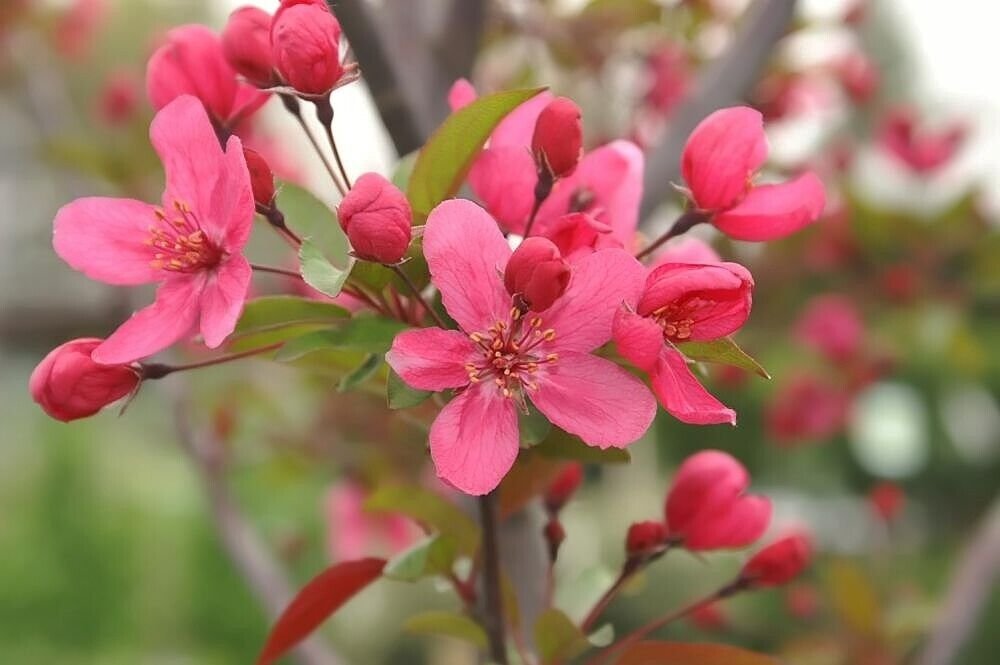
Why Choose Malus ‘Prairifire’?
- Compact Size: Perfect for small yards, courtyards, or rooftop gardens.
- Year-Round Interest: Red foliage in spring and summer, pink flowers in spring, and red fruits in fall.
- Low Maintenance: Disease-resistant and hardy, requiring minimal care compared to other crabapple varieties.
- Wildlife-Friendly: Fruits attract birds and pollinators.
- Versatile Landscaping: Works as a specimen tree, accent tree, or part of a mixed border.
How to Plant Malus ‘Prairifire’
1. Choosing the Right Location
Malus ‘Prairifire’ thrives in full sun (6–8 hours of direct sunlight per day). It can tolerate partial shade but will flower less profusely. The tree prefers well-drained soil and is adaptable to clay, loam, or sandy soils. Avoid areas where water tends to pool, as excessive moisture can lead to root problems.
2. Planting Steps
- Dig a Hole: Make a hole twice as wide and as deep as the tree’s root ball.
- Soil Preparation: Mix garden soil with compost or well-rotted manure to enrich the planting area.
- Position the Tree: Place the tree in the hole, ensuring the root collar is slightly above ground level.
- Backfill and Water: Fill the hole with soil and water thoroughly to settle the roots.
- Mulch: Apply a 2–3 inch layer of mulch around the base to retain moisture and prevent weeds.
Caring for Malus ‘Prairifire’
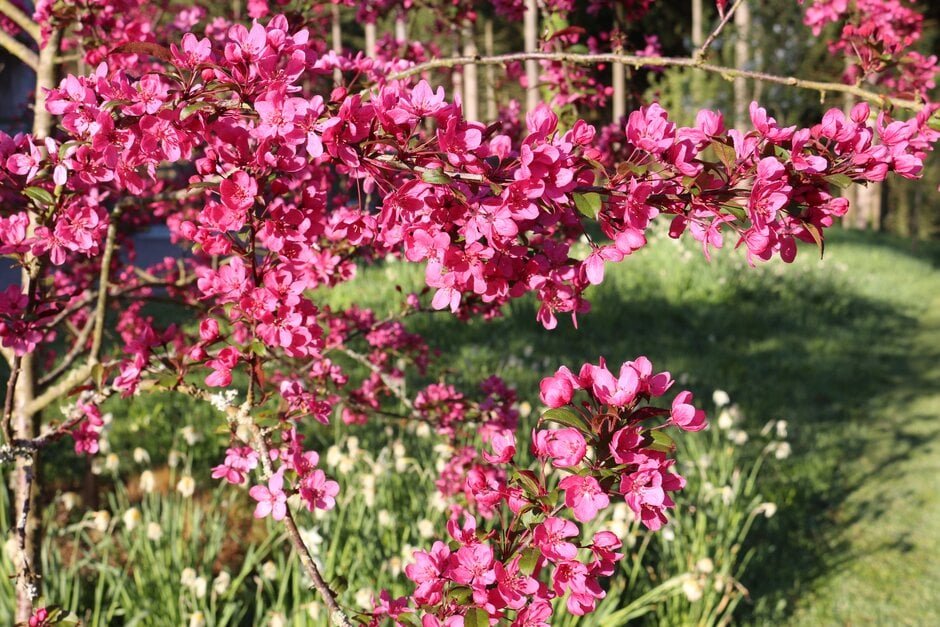
1. Watering
Young trees need regular watering for the first year to establish strong roots. After that, Malus ‘Prairifire’ is moderately drought-tolerant but will perform best with consistent moisture, especially during dry spells. Water deeply at the base rather than frequent shallow watering.
2. Fertilizing
Feed the tree in early spring with a balanced fertilizer or slow-release granular fertilizer. Compost or organic matter around the base can also improve soil fertility. Avoid excessive nitrogen, which can promote leaf growth over flowers and fruits.
3. Pruning
Pruning is important to maintain the tree’s shape, health, and flowering potential:
- Timing: Prune after flowering in late spring or early summer.
- Remove Dead or Diseased Wood: Cut back any damaged branches to prevent disease.
- Shape the Tree: Remove crossing or inward-growing branches to improve airflow.
- Encourage Flowering: Light pruning can stimulate flower bud formation for the next season.
Flowering and Pollination
In spring, Malus ‘Prairifire’ produces clusters of rosy-pink blossoms, which gradually fade to white as they mature. These flowers not only add stunning visual appeal but also attract pollinators such as bees and butterflies. While crabapples are generally self-fertile, planting another compatible crabapple nearby can improve fruit set.
Fruiting
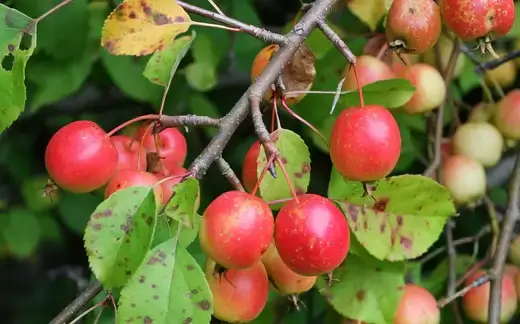
Malus ‘Prairifire’ produces small, bright red crabapples in the fall, typically less than 1 inch in diameter. The fruits persist into winter, providing food for birds and adding visual interest after leaves have fallen. Though small, these fruits are sometimes used for making preserves, jellies, or ornamental displays.
Pest and Disease Resistance
One of the reasons Malus ‘Prairifire’ is popular is its resistance to common crabapple diseases.
- Apple scab: Resistant in most climates.
- Fire blight: Rare but possible; monitor tree health.
- Cedar apple rust: Generally resistant but may occur if junipers are nearby.
Regular inspection and good garden hygiene will help keep your tree healthy.
Landscaping Uses
Malus ‘Prairifire’ is versatile and can be used in various ways:
- Specimen Tree: Plant alone to showcase its striking foliage and flowers.
- Accent Tree: Place in borders or near patios for visual impact.
- Small Garden Tree: Ideal for urban gardens, courtyards, or rooftop containers.
- Wildlife-Friendly Planting: Provides food and shelter for birds and pollinators.
Growing Malus ‘Prairifire’ in Containers
While Malus ‘Prairifire’ is small-growing, it can also thrive in large containers or grow bags:
- Use a pot at least 18–24 inches in diameter with good drainage.
- Fill with a well-draining soil mix enriched with compost.
- Water more frequently than ground-planted trees, as containers dry faster.
- Fertilize regularly to support flowering and fruiting.
Container-grown trees can be moved to protect from harsh winter winds or to optimize sunlight.
Tips for a Healthy Malus ‘Prairifire’
- Mulch Around the Base: Conserves moisture and reduces weed growth.
- Monitor Soil Moisture: Avoid overwatering, which can lead to root rot.
- Inspect for Pests: Treat aphids or scale insects early with neem oil.
- Support Young Trees: Stake newly planted trees to prevent wind damage.
- Prune Annually: Maintain shape and encourage strong flowering.
Conclusion
Malus ‘Prairifire’ is one of the best red-leaved, small-growing crabapples available for modern gardens. Its combination of vibrant foliage, stunning spring flowers, compact size, and low-maintenance nature makes it an ideal choice for both novice and experienced gardeners. Whether planted as a focal point in a small garden, in a container on a balcony, or as part of a mixed border, this ornamental tree provides year-round beauty and wildlife benefits.
By understanding how to plant, care for, prune, and harvest your Malus ‘Prairifire’, you can enjoy a tree that not only elevates the aesthetic of your landscape but also offers delicious ornamental fruits and attracts beneficial pollinators to your garden.
Add this gorgeous crabapple to your garden, and it will reward you with colorful leaves, flowers, and fruits for many seasons to come.
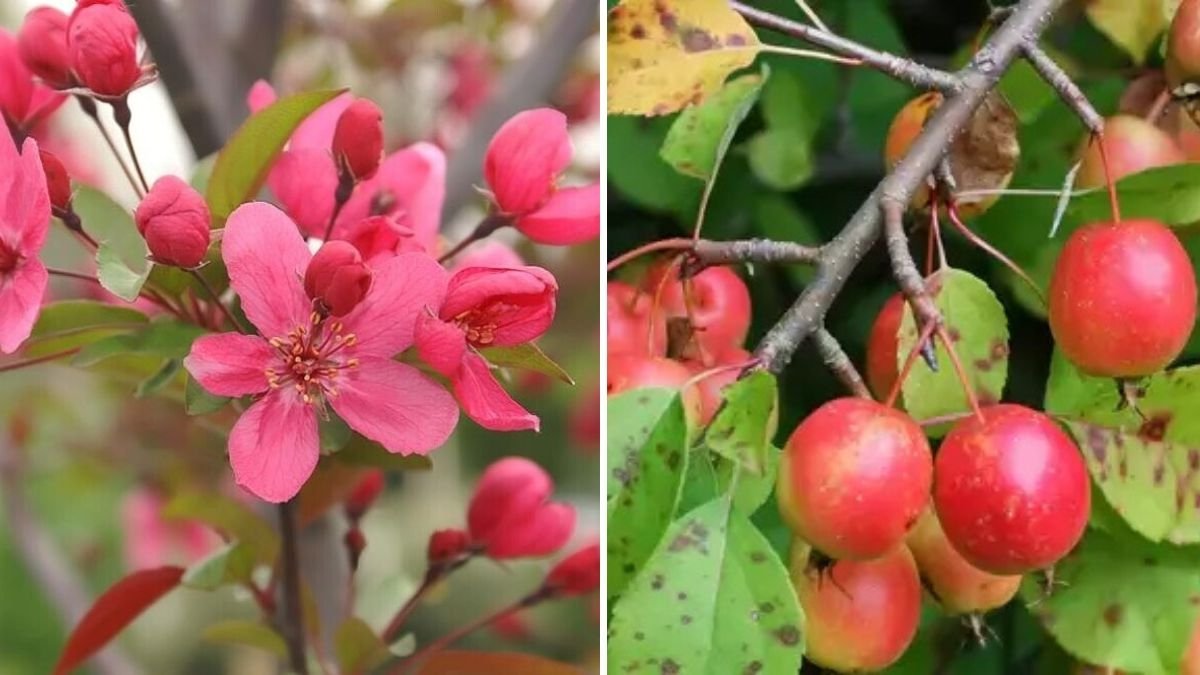
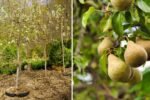


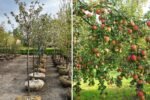

Leave A Comment